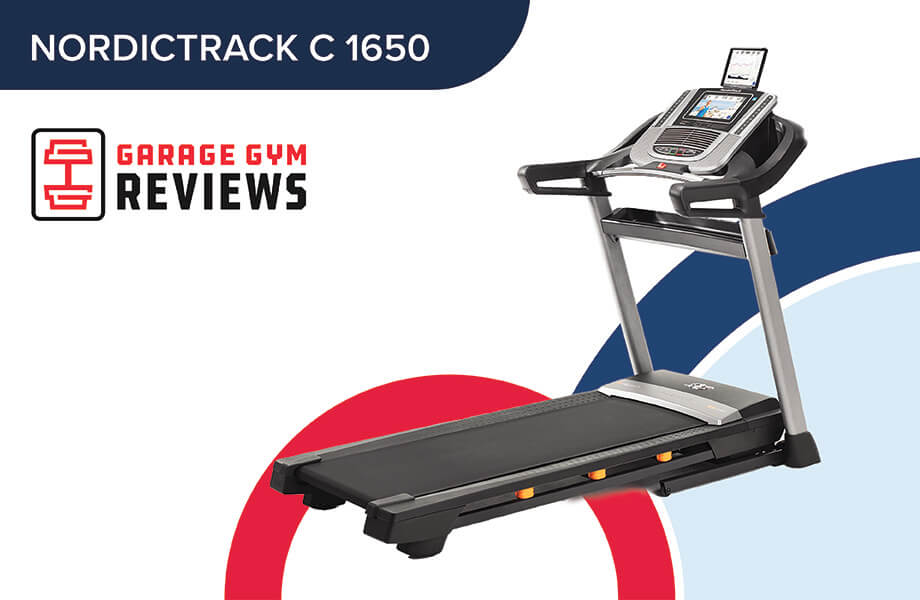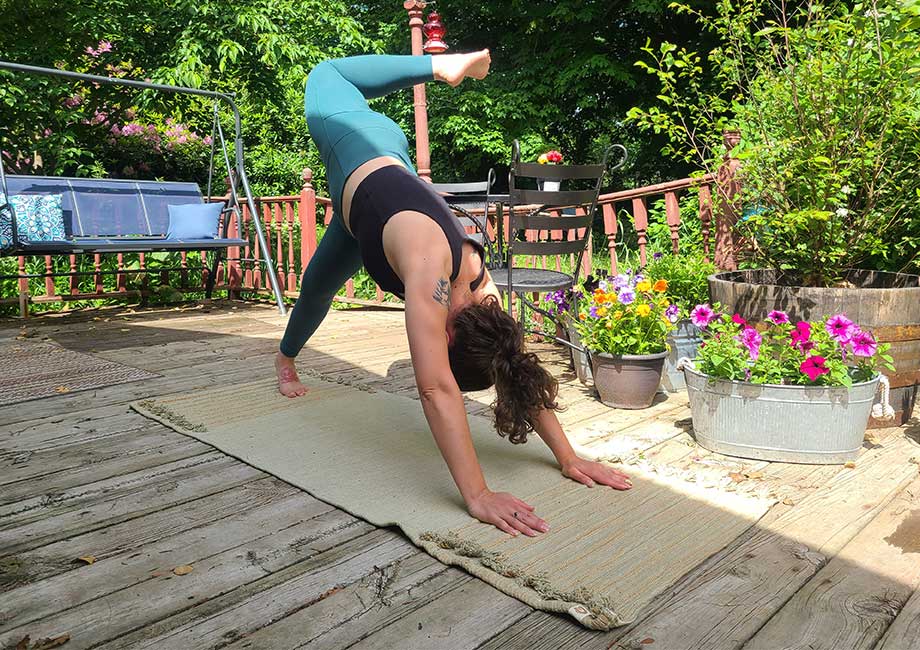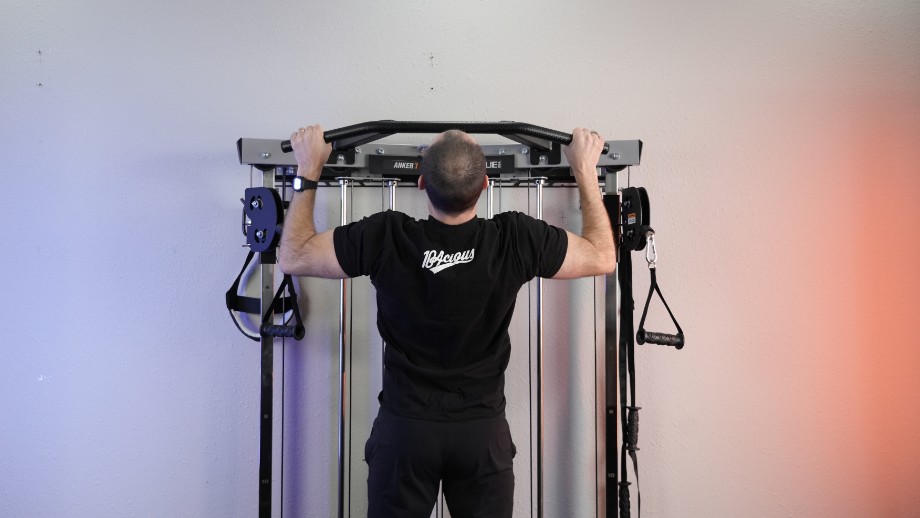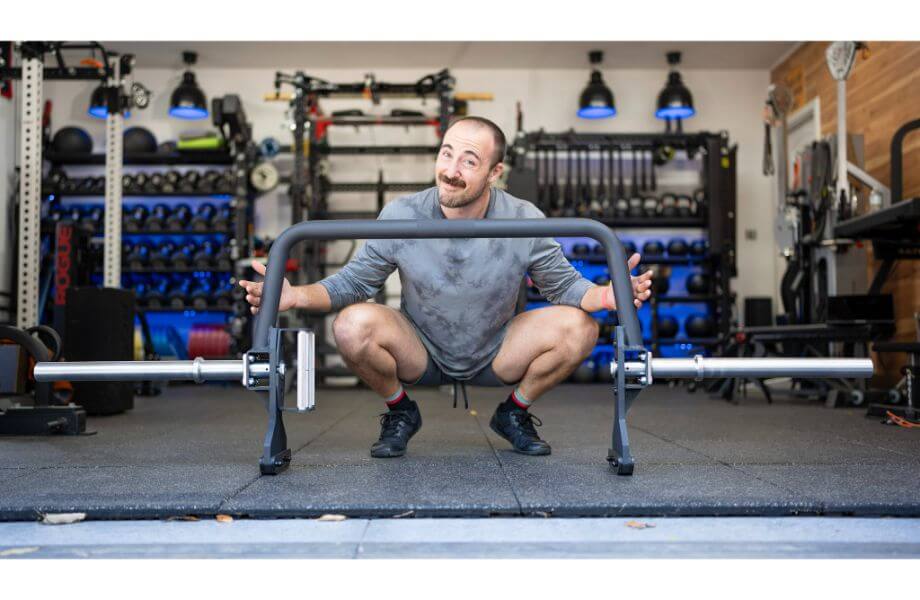As the running season begins, it’s crucial to prepare your body for the demands of your running workouts and mitigate the risk of common issues like shin splints. If you’re not a runner (don’t worry, me either), new protocols or introducing high-impact exercises into your routine can also raise the alarm for shin splints.
Shin splints are flat-out annoying (and painful) and are characterized by leg pain along the inner edge of your shinbone. They’re a sign of overtraining in the gym and can happen due to the repetitive impact of running. Chances are, you’ve felt the ache of shin splints at some point.
Drawing upon years of expertise as a certified strength and conditioning specialist (CSCS) working with runners, cyclists, and field sport athletes, I’ve crafted a set of shin splint stretches that serve as my go-to tools for enhancing resiliency, alleviating the discomfort associated with shin splints, and ensuring their prevention.
RELATED: Common Lifting Mistakes
I hope it’s not a stretch to say that after reading this, you can say “so long!” to shin splint pain.
What Are Shin Splints?
In a July 2022 study in Cureus1, researchers found that shin splints, also known as medial tibial stress syndrome1 (MTSS), are associated with a discomfort or pain that develops in the lower leg due to repetitive stressors (overuse). While shin splints can arise in individuals who overtrain at the gym, the predominant occurrences are associated with runners or field athletes (football, soccer, etc.). Per the study above, approximately 70% of runners1 encountered heightened inflammation in the lower leg, often leading to shin splints.
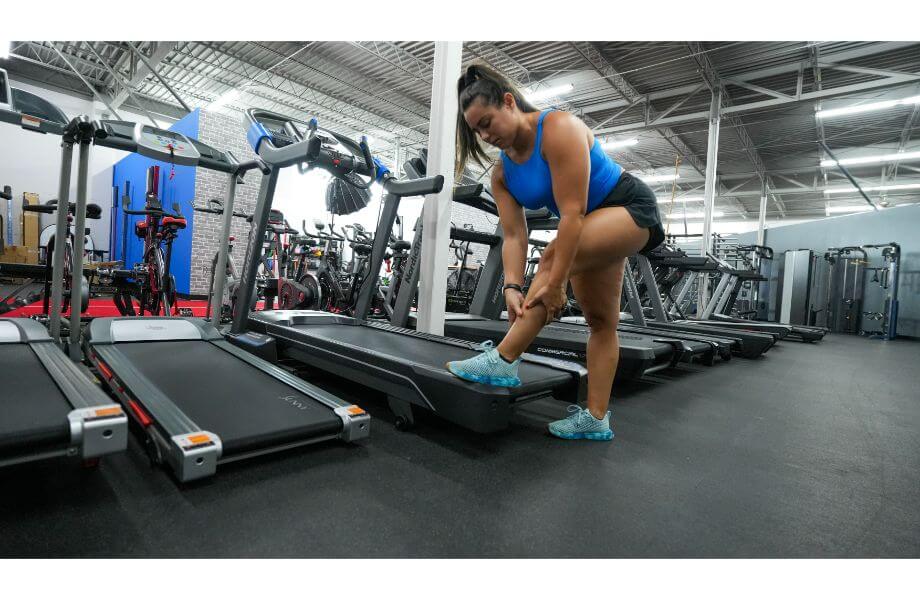
A few of the main causes2 of shin splints are as follows:
- Overuse/overtraining
- Muscle weakness/imbalance in the ankle or triceps surae
- Improper running mechanics
- Improper footwear
- Body composition and weight
RELATED: Best Running Shoes
8 Best Shin Splint Stretches
If you’re an endurance enthusiast, racking up the miles running, biking, or gearing up for a new gym routine, exploring the most effective shin splint exercises is valuable. While shin splints aren’t considered a major injury (or career ender), I consider any setback that derails you from your fitness goals detrimental.
Here are the seven movements I recommend to help keep you active and pain-free.
Gastrocnemius Calf Stretch
Why do it: The gastrocnemius calf stretch is vital for optimal running mechanics, targeting the calf muscle in the rear leg. Keep your knee straight to stretch the gastrocnemius properly since this muscle originates above the knee.
How to do it:
- Stand away from a wall with your right foot positioned behind you, keeping your toes forward.
- Place your hands at shoulder height on the wall for support.
- Keep your back leg straight with your heel flat on the ground.
- Bend your front knee while keeping your back leg straight, feeling a gentle calf stretch.
- Maintain this position for 30 to 60 seconds to complete the stretch.
- Repeat on the other side.
Expert tip: To increase or decrease the intensity of the stretch, you can adjust the distance between your front and back foot. A greater distance will intensify the stretch, while a shorter distance will make it more moderate. You may also elevate your foot and drop your heel to enhance this stretch by intensifying the stimulus on your calves.
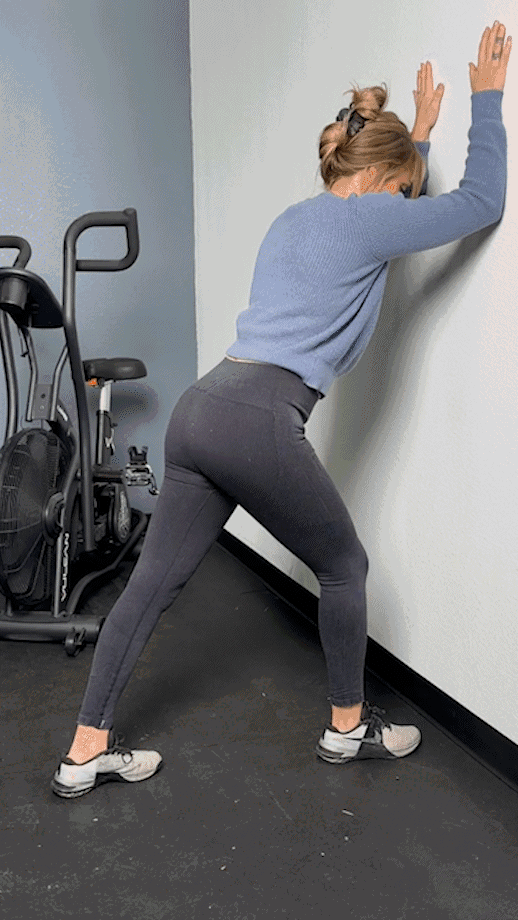
Soleus Calf Stretch
Why do it: Running or exercising with a weak or fatigued soleus muscle compromises its ability to absorb shock and disperse ground contact. Your soleus muscle lies deep (under) the gastrocnemius. Due to its positioning, keeping the knee bent allows you to target the soleus muscle.
How to do it:
- Stand away from a wall with your right foot positioned behind you, keeping your toes forward.
- Place your hands at shoulder height on the wall for support.
- Bend the right knee while keeping the heel on the ground, leaning forward at the ankle.
- As the knee slightly bends, the tension shifts from the gastrocnemius to the soleus.
- Maintain this position for 30 to 60 seconds to complete the stretch.
- Repeat on the other side.
Expert tip: Elevate your foot and lower your heel for a more effective soleus stretch while keeping your knee bent.

Deep Lunge Stretch
Why do it: 99.9% of my programs incorporate some form of the deep lunge stretch in the warm-up or recovery portion. It’s one of the best full-body approaches to mobility. This exercise mobilizes your hip flexors, hamstrings, quads, glutes, adductors, calves, soleus, ankle, and lower back.
How to do it:
- Step forward with your right foot into a lunge position
- Bend your right knee to 90 degrees, lowering your left knee toward the ground.
- Drop your chest and gently push your right elbow inside your right leg towards the floor.
- Hold for 15 to 30 seconds, feeling the stretch in your hip flexors and quadriceps.
- Slowly stand back up and repeat on the other side.
Expert tip: For an even greater stimulus, consider adding a t-spine rotation, targeting lat and upper back mobility.
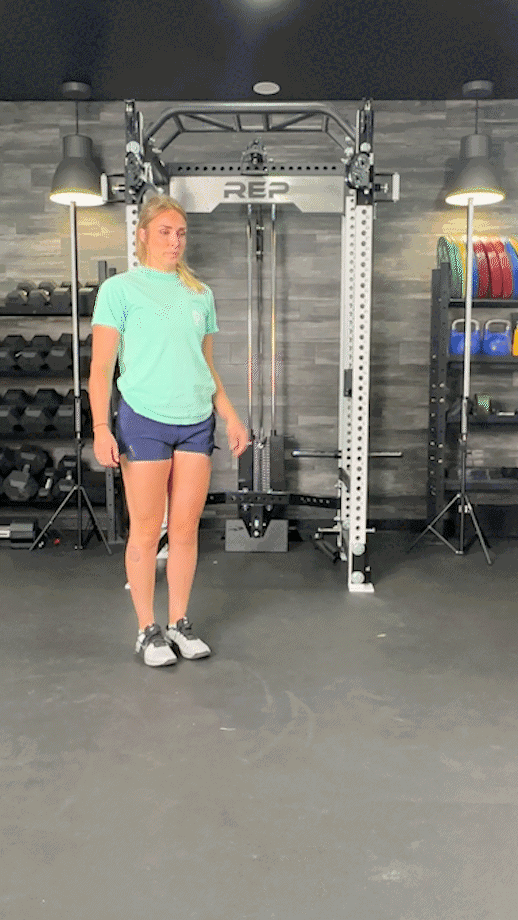
Piriformis Stretch
Why do it: Optimal hip function is essential for dynamic activities like running and lifting. Weak or immobile glutes can impact the piriformis, leading to piriformis syndrome and affecting running stride—a factor in shin splints. Including the piriformis stretch in your routine ensures effective hip muscle movement and proper function.
How to do it:
- Sit on a bench or chair with your left foot flat on the ground and your right ankle crossed over your left knee, forming a figure-four shape.
- Gently push down on your right knee, feeling the stretch in your right buttock.
- Hold for 15 to 30 seconds and then switch sides.
Expert tip: Pair the piriformis stretch with glute bridge isometric holds to improve functionality and mobility in your hips.
RELATED: Hip Hinge Exercises
Figure-Four Stretch
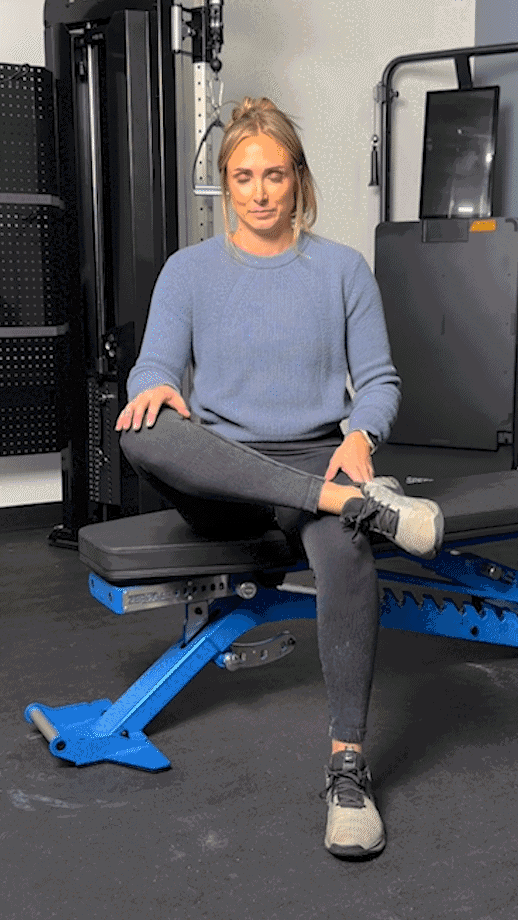
Why do it: An alternate take on the piriformis stretch above, the figure-four stretch activates the same muscles from a prone position but in the opposite direction.
How to do it:
- Lie on your back with both knees bent and feet flat on the floor.
- Cross your right ankle over your left knee, forming a figure-four shape.
- Reach through the space between your legs and clasp your hands behind your left thigh.
- Pull your left thigh towards your chest, feeling the stretch in your right buttock.
- Hold for 15 to 30 seconds and then switch sides.
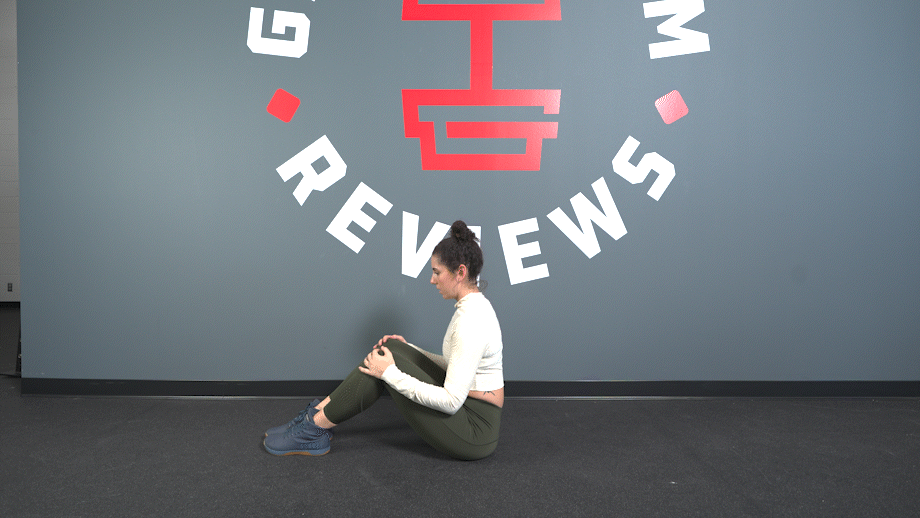
Penguin Walks
Why do it: Penguin walks are a potent strength movement for the anterior leg, targeting the tibialis anterior—the muscle that runs alongside your tibia. Penguin walks offer an opportunity for active ankle dorsiflexion (backward bend), a movement that many individuals often lack. If waddling isn’t your style, opt for wall-supported tibialis raises, offering the same strength benefits.
How to do it:
- Start by standing with flat feet and actively lift your toes.
- Keep your toes off the ground as you take small steps.
- Complete for a prescribed amount of steps or distance.
Expert tip: Use variations of the penguin walk: forward, backward, and lateral steps. You can also tailor your approach with isometric or shorter holds and additional sets and reps.

3-Way Ankle Joint Mobilization
Why do it: The 3-way ankle mobilization, with its three distinct movements, offers an approach to ankle flexibility that surpasses other unidirectional ankle exercises. This mobility is crucial for running, sprinting, squatting, and lunging. Any restrictions in ankle movement can impact the entire kinetic chain, affecting your toes, feet, ankles, lower legs, knees, upper legs, hips, pelvis, and spine.
How to do it:
- Begin in a half-kneeling position with your right foot forward.
- Drive your knee over your little toe, hold briefly (3 to 5 seconds), and return.
- Drive your knee over the middle of your foot, hold briefly, and return.
- Drive your knee over your big toe, hold briefly, and return.
- Repeat on the opposite side.
- Continue alternating for desired reps or duration.

Shin Foam Roll – SMR
Why do it: Whether dealing with shin splints or not, foam rolling your tibialis anterior is an excellent self-myofascial release (SMR) technique to reduce inflammation and improve recovery.
How to do it:
- Place the foam roller under your shins, starting close to your knees.
- Bend your knees, balancing on the balls of your feet.
- Lean forward and place your hands on the floor for stability.
- Roll the foam roller down and back up your shins.
- Repeat for 1 to 2 minutes.
Expert tip: I advise you to take it a step further and target the lower leg fully, spending time rolling out your shins, calves, and soleus.
RELATED: Foam Roller Exercises

How to Prevent Shin Splints
Shin splints don’t have to be an inevitability when participating in high-impact activities. Thankfully, they’re entirely preventable. Here are a few of my tips for stopping shin splints in their tracks.
Take Your Time
Implementing a training program incorporating progressive overload—or gradual increases in training stimulus—prevents and alleviates the adverse effects of shin splints. Shin splints commonly arise from overuse injuries3, characterized by repetitive microtrauma and excessive load on the musculoskeletal system.
RELATED: What is Progressive Overload?
Whether you’re engaged in running, biking, or gym-based activities, incorporating progressive overload into your training regimen is a proven strategy for maximizing success. Ensure your training load steadily increases weekly, whether measured in distance, time, or sets and reps.
Pair this with conscientious recovery practices such as mobility work, hydration, and proper nutrition to amplify the benefits of your training.
Stretch and Strengthen
Implement a proactive strategy by incorporating stretches and strength-building exercises for the lower body at least three to four times per week to prevent inflammation and alleviate stressors associated with shin splints. Initiate the routine with mobilization targeting larger muscle groups, including deep lunges and piriformis stretches, alongside mobility exercises concentrating on hamstrings and quadriceps. Progress to smaller joints and muscles with 3-way ankle joint mobilization stretches for the calf and soleus, and consider incorporating soft tissue techniques like using a lacrosse ball to roll out the bottom of your foot or foam rolling your shins.
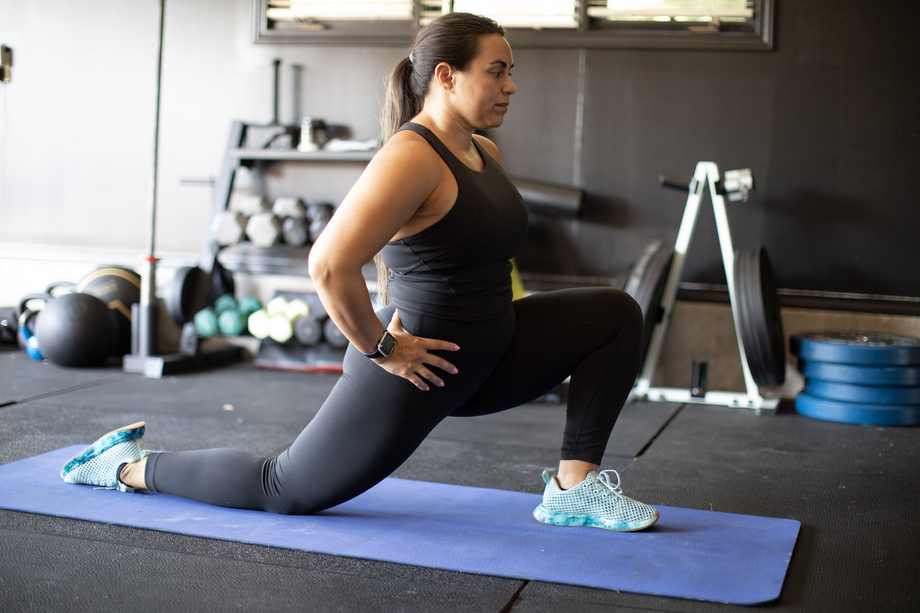
After mobility, shift your focus to strengthening by incorporating calf raises and wall-supported tibialis raises to enhance the strength of the muscle-tendon units in the lower body, particularly targeting the ankle joint region. Consider incorporating tempos or isometric holds4 for fifteen to thirty seconds in these exercises, as the latter is particularly effective in influencing pain intensity, improving range of motion, and enhancing functional ability. I consistently integrate isometric holds into preventive and return-to-physical activity measures to optimize their impact for athletes and patients.
Consistency is key.
Expert tip: Isometric holds are valuable for strengthening muscles and tendons. Begin with shorter durations, around 15 to 20 seconds, and gradually extend to holds lasting between thirty to sixty seconds as you advance in your strength training progression.
RELATED: How to Prevent Shin Splints on a Treadmill
Warm Up and Cool Down
Failing to prepare is preparing to fail. Doing a proper warm-up can take as little as five to ten minutes, but the importance is immeasurable. If you’re not sure where to start, check out the best warm-up exercises as a starting point. After you crush your workout, you must shift the body into recovery mode using a cool down. Don’t worry; here are some cool-down exercises for you, too.
Warm-Up
Warming up is crucial in preventing shin splints. A great warm-up prepares you for exercise and begins shifting the body into high gear. It’ll gradually increase blood flow to your muscles, enhance mobility and flexibility, increase core temperature to improve muscle function, reduce injury risk, and create a neuromuscular kick, improving nerve and muscle connections.
Cool-Down
This phase includes light aerobic activity and stretching, promoting blood circulation and removing metabolic waste products from muscles. Stretching during the cool-down5 maintains flexibility and prevents the accumulation of lactic acid, reducing muscle stiffness and soreness.
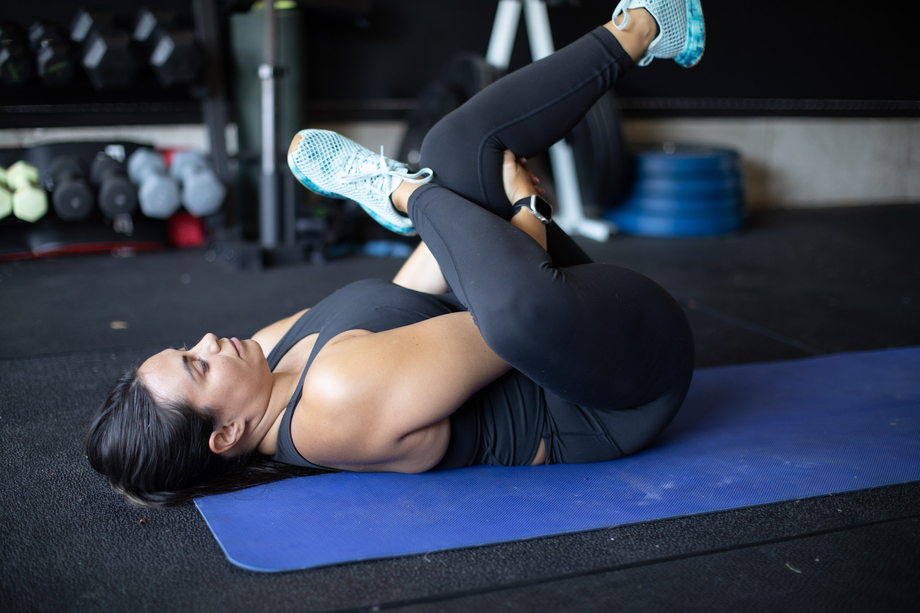
Regularly cooling down after workouts contributes to long-term injury prevention, ensuring overall muscle and joint health and lowering the risk of developing shin splints.
Use Proper Footwear
Improper footwear can lead to shin splints, while proper footwear helps alleviate and avoid the effects. In a June 2019 study in the Asian Journal of Sports Medicine6, researchers found running footwear with custom insole (or orthopedic) designs reduces impact during running, establishing an appropriate strategy to diminish tibial stress after shin splint in runners.
What does this mean? If you plan on running long distances in your workouts, investing in an appropriate pair of running shoes is best. You wouldn’t squat in sandals—right? (I really hope not).
RELATED: How to Choose Running Shoes
Tips for Relieving Shin Splint Pain
Let me reach into my bag of tips and share a few ways to alleviate those persistent shin splints—that aren’t just ibuprofen. There are recurring themes in shin splint treatment, emphasizing the pivotal roles of training volume, recovery, mobility, and strength training.
Modify Your Training Volume
Adjusting training volume is a recommended treatment option for handling shin splints by addressing the underlying overuse issue. In an August 2014 study in the International Journal of Sports Physical Therapy7, researchers found that reducing training frequency, length, and total running distance substantially reduced injury.
When you’re pain-free and able to return to regularly scheduled workouts, begin by gradually increasing the training volume. You’ll allow your muscles, tendons, and bones to adapt to the stress imposed during workouts. Sudden spikes in training intensity or duration can contribute to the development of shin splints. Gradual progression minimizes the risk of overuse injuries.
Expert tip: Avoid high-impact exercises and hard surfaces.
Rest and Recover
It’s plain and simple: if you’re already experiencing the effects of shin splints, you need to shut it down—but not completely.
When shin splints start to surface, prioritizing rest and recovery is crucial for successful healing. However, it doesn’t necessarily mean a complete halt to your workouts. For endurance enthusiasts accustomed to extensive runs, consider diversifying your training routine. Engage in low-impact activities like ski ergs, rowers, or stationary bikes to maintain an elevated heart rate, preserve your fitness progress, and provide rest for your legs.
RELATED: Our Favorite Expert-Reviewed Exercise Bikes
Opting for lower-impact cardio exercises and dedicating time to cross-training allows you to continue training while addressing weaknesses. Train smart—without making things harder, and don’t overlook the importance of physical therapy or consulting a healthcare professional.
Mobilize the Lower Leg
Focusing on lower leg mobility is essential for addressing and preventing shin splints. Begin by mobilizing larger areas like the hips, quadriceps, and hamstrings, then target smaller muscle groups such as the calves, soleus, and feet. Track your progress, and when improvements occur, vary the exercises while still focusing on the key areas.
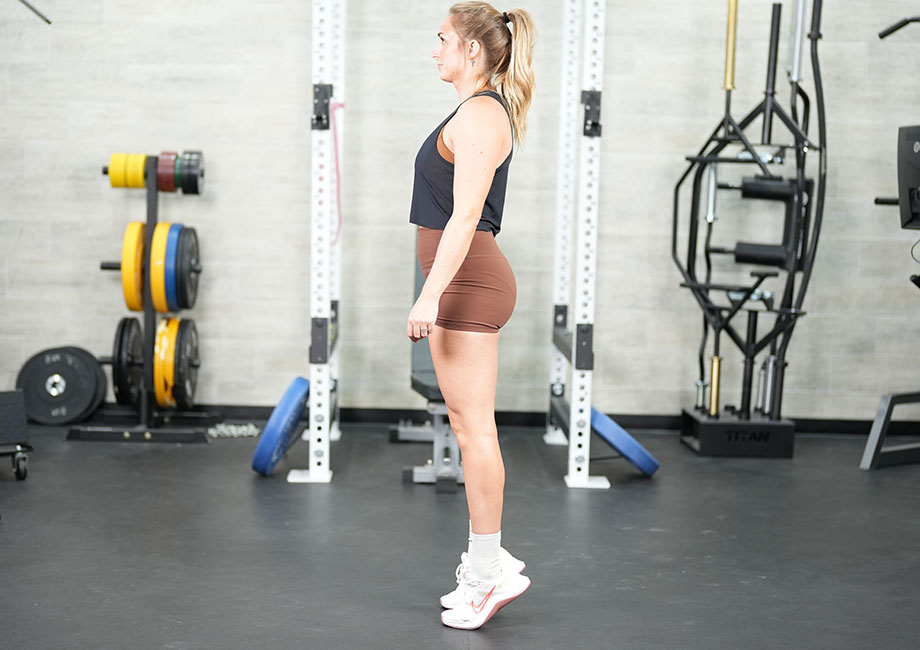
Here are a few of my certified “must-do” exercises for runners, field athletes, and gym-goers:
- Deep lunge stretch
- Piriformis stretch
- 3-way ankle mobility
- Front-foot elevated split squats
- Elevated calf raises
Strength Exercises
It’s easy to overlook the not-so-sexy strength exercises in favor of back squats, bench presses, and deadlifts—but you shouldn’t. The importance of less glamorous yet crucial strength exercises often goes unnoticed and are essential for injury prevention and building resilience.
Specifically addressing shin splints, consider incorporating the following strength exercises to fortify and avoid setbacks:
- Penguin walks (heel walks)
- Toe walks
- Tib raises (Toe raises)
- Calf raises, and iso holds
- Glute bridge variations
- Clamshells
Shin Splint Stretches: Final Thoughts
Here’s a not-so-fun fact: shin splints suck. Whether you’re a committed endurance-lover or fitness enthusiast, integrating effective shin splint stretches into your routine can help prevent unnecessary pain and save you time.
- Shin splints are characterized by inflammation of the tibialis anterior.
- Primarily affecting runners, shin splints are common in various sports and fitness activities.
- The main causes are overuse, lack of mobility and muscle weakness, improper running mechanics, poor footwear, and body comp/weight.
- Mobilizing and strengthening joints and muscles is an effective approach to prevent and relieve symptoms.
Shin Splint Stretches: FAQs
Can stretching get rid of shin splints?
Stretching plays a crucial role in relieving the effects of shin splints. Key options include gastrocnemius calf and soleus stretches, specifically targeting improved lower leg and ankle mobility.
Additionally, strengthening lower leg muscles through exercises like penguin walks, calf raises, and tibialis raises prove effective in warding off shin splints. A combination of mobility and strength work proves to be a constructive approach.
Is it OK to push through shin splints?
Listen to your body—when pain signals, heed its warning. When discomfort arises, recognize it as a cue for rest and recovery and adapt your workouts accordingly. Remember, if you’re injured, training becomes challenging, hindering your progress toward your goals. Prioritize your well-being, adjust your routine when needed, and ensure that a mindful approach to recovery remains a cornerstone of your fitness journey.
Does KT tape help shin splints?
In an October 2018 study in The Journal of Sports Medicine and Physical Fitness8, researchers discovered participants exhibiting symptoms of shin splints who used the application of KT tape (kinesiology tape) reported reduced pain and demonstrated enhanced functional activity when compared to individuals using shoe insoles after just a week of use. This finding suggests that short-term use of KT tape may be a promising intervention for alleviating shin splint symptoms and improving overall functional outcomes.
How fast do shin splints go away?
While an exact recovery timeline for shin splints remains uncertain, a consensus suggests three to four weeks. During this period, prioritize rest, incorporate essential shin splint stretches, and focus on strengthening lower leg muscles to facilitate healing and minimize the risk of recurrence. Consult a physical therapist if you begin experiencing shin splints.
RELATED: Lower-Body Workouts
References
- Deshmukh NS, Phansopkar P. Medial Tibial Stress Syndrome: A Review Article. Cureus. 2022;14(7):e26641. Published 2022 Jul 7. doi:10.7759/cureus.26641
- Bhusari N, Deshmukh M. Shin Splint: A Review. Cureus. 2023;15(1):e33905. Published 2023 Jan 18. doi:10.7759/cureus.33905
- Franco MF, Madaleno FO, de Paula TMN, Ferreira TV, Pinto RZ, Resende RA. Prevalence of overuse injuries in athletes from individual and team sports: A systematic review with meta-analysis and GRADE recommendations. Braz J Phys Ther. 2021;25(5):500-513. doi:10.1016/j.bjpt.2021.04.013
- Onwunzo CN, Igwe SE, Umunnah JO, Uchenwoke CI, Ezugwu UA. Effects of Isometric Strengthening Exercises on Pain and Disability Among Patients With Knee Osteoarthritis. Cureus. 2021;13(10):e18972. Published 2021 Oct 22. doi:10.7759/cureus.18972
- American Council on Exercise. Five reasons you shouldn’t skip your cool down after exercise. ACE Fitness. https://www.acefitness.org/resources/everyone/blog/3683/five-reasons-you-shouldn-t-skip-your-cool-down-after-exercise/
- De la Fuente C, Henriquez H, Andrade DC, Yañez A. Running Footwear with Custom Insoles for Pressure Distribution Are Appropriate to Diminish Impacts After Shin Splints. Asian J Sports Med. 2019;10(3):e82461. doi:10.5812/asjsm.82461.
- Pietrzak M. Diagnosis and management of acute medial tibial stress syndrome in a 15 year old female surf life-saving competitor. Int J Sports Phys Ther. 2014;9(4):525-539.
- Kachanathu SJ, Algarni FS, Nuhmani S, Alenazi AM, Hafez AR, Algarni AD. Functional outcomes of kinesio taping versus standard orthotics in the management of shin splint. J Sports Med Phys Fitness. 2018;58(11):1666-1670. doi:10.23736/S0022-4707.17.07520-X



